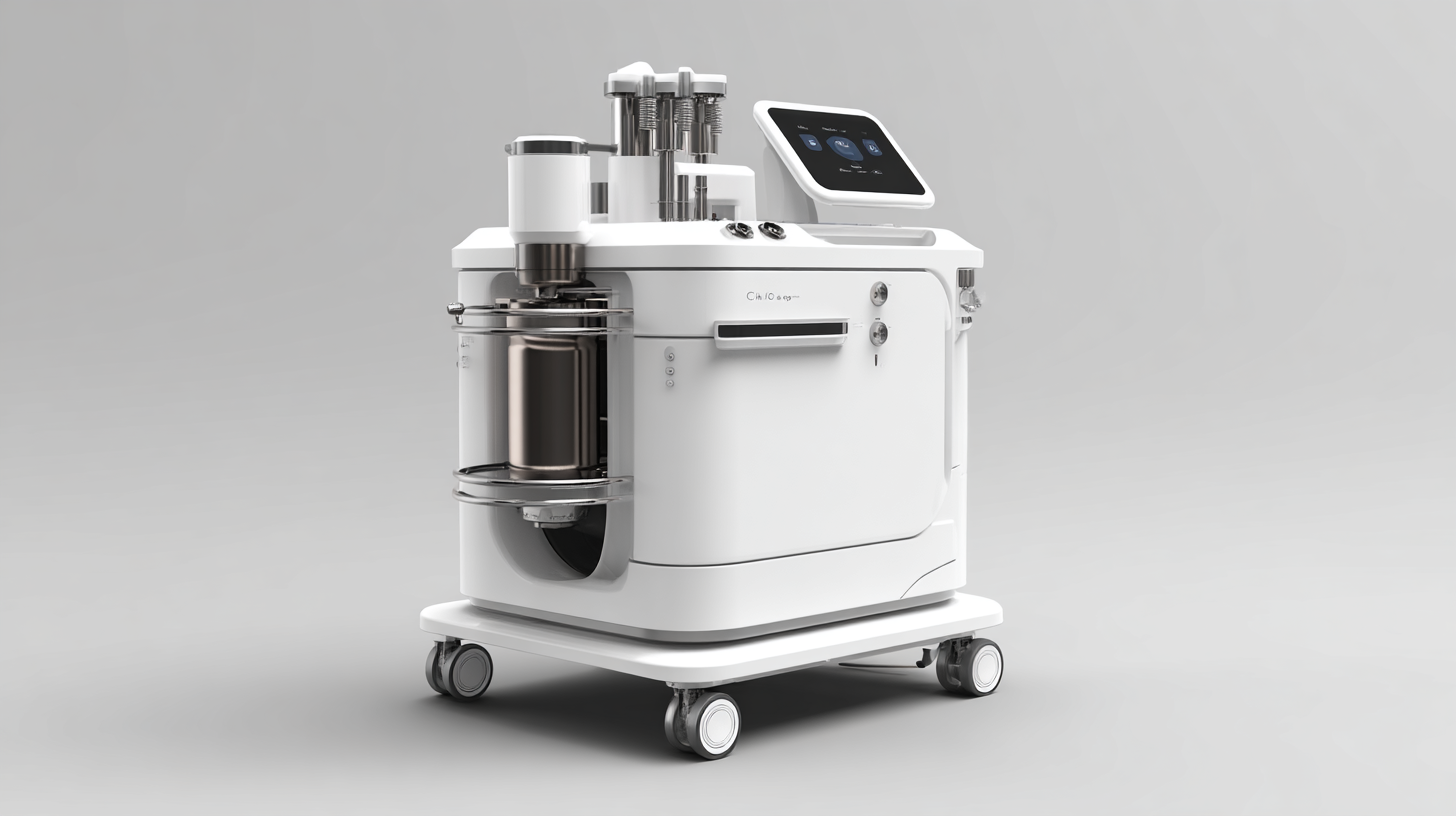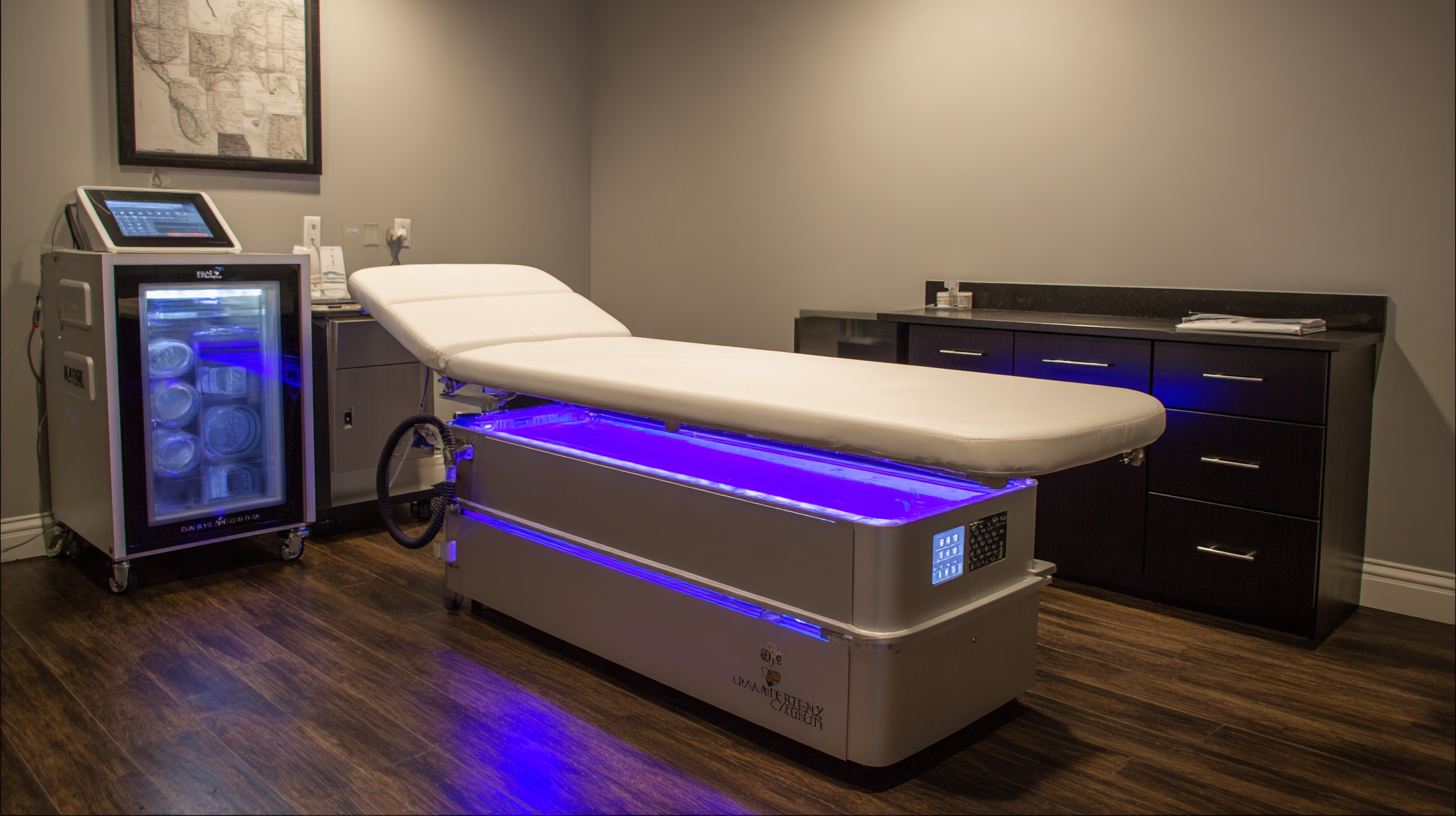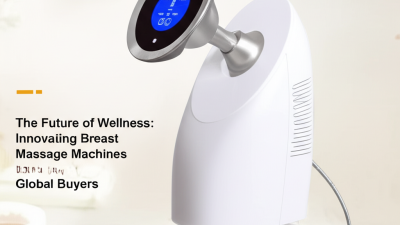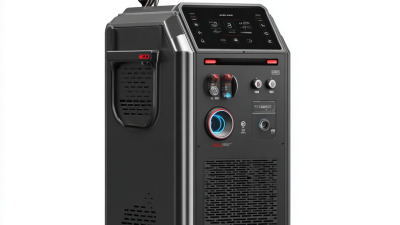Unlocking the Science Behind Cavitation Machines Discovering Their Impact on Body Contouring and Fat Reduction
In recent years, the popularity of non-invasive body contouring methods has surged, with one of the most innovative technologies leading the charge being the Cavitation Machine. This advanced device harnesses the science of cavitation to target stubborn fat deposits and sculpt the body effectively. Unlike traditional fat reduction techniques, cavitation uses low-frequency ultrasound waves to create micro-bubbles within fat cells, causing them to rupture and be naturally eliminated by the body. This process not only helps in reducing fat but also promotes skin tightening, making it a sought-after solution for those looking to enhance their physique without undergoing surgical procedures.

In this article, we will delve into the mechanics of the Cavitation Machine, exploring how it works, its benefits and limitations, and its overall impact on body contouring and fat reduction. Join us as we unlock the science behind this groundbreaking technology and its transformative effects on body aesthetics.
Understanding Cavitation: The Basics of Ultrasound Technology in Body Contouring
Cavitation technology has revolutionized the field of body contouring, utilizing ultrasound waves to target and reduce localized fat deposits. This non-invasive method operates on the principle of creating microscopic bubbles in fat cells through the application of ultrasound frequencies, typically between 20 kHz and 40 kHz. According to a report from the American Society of Aesthetic Plastic Surgery, non-surgical fat reduction procedures, including cavitation, saw a significant increase of 36% in 2020 compared to previous years, underscoring the growing popularity of such treatments among those seeking body sculpting options.
The appeal of ultrasound cavitation lies in its capability to produce instant and noticeable results without the need for surgical interventions. Clinical studies indicate that patients can experience an average of 1-3 inches of fat loss around treated areas after just a few sessions. A survey by the International Journal of Aesthetic and Anti-Aging Medicine found that approximately 80% of participants reported satisfaction with their results, citing improvements in both body shape and overall confidence. This data reflects a broader trend within the cosmetic industry, where consumers increasingly favor effective, nonsurgical alternatives for body contouring and fat reduction.
Analyzing Clinical Studies: Efficacy of Cavitation in Fat Reduction and Body Sculpting
Recent clinical studies have increasingly highlighted the efficacy of cavitation machines in fat reduction and body sculpting. A report by the The Journal of Cosmetic Dermatology indicates that patients undergoing ultrasonic cavitation treatments experienced an average fat layer reduction of 2.5 cm after just three sessions. This non-invasive technique employs low-frequency ultrasound waves, targeting adipose tissues while leaving surrounding structures unharmed. As a result, many users report not only improved body contours but also enhanced skin texture.

Furthermore, a comprehensive analysis conducted by the American Society of Plastic Surgeons demonstrated that over 65% of patients treated with cavitation machines noted visible results within weeks. The procedure is particularly appealing for individuals seeking alternatives to surgical methods like liposuction. The studies suggest that cavitation can lead to lipolysis, the breakdown of fat cells, which might explain its increasing popularity in body contouring practices. These findings highlight the potential of cavitation as a scientifically-backed option for effective fat reduction and enhanced body aesthetics.
The Role of Cavitation in Cellulite Reduction: Scientific Insights and Industry Perspectives
Cavitation machines have gained significant attention in the field of body contouring and fat reduction, particularly for their role in the reduction of cellulite. This phenomenon occurs when ultrasonic waves create microbubbles in the body’s fatty tissues, leading to the breakdown of fat cells. Scientific studies have highlighted that cavitation is effective in targeting localized fat deposits, which are often resistant to diet and exercise. By disrupting the structural integrity of fat cells, cavitation not only aids in fat loss but also promotes the smoother appearance of the skin, making it a desirable option for those seeking non-invasive cosmetic treatments.
From an industry perspective, practitioners emphasize the necessity of integrating cavitation with a holistic approach to body contouring. Coupling cavitation treatments with lifestyle changes, such as proper nutrition and regular physical activity, enhances the overall effectiveness of the procedure. Moreover, industry experts advocate for continued research into the long-term effects and optimal treatment protocols for cellulite reduction, supporting the growing demand for evidence-based practices. As consumer interest in non-surgical aesthetic solutions continues to rise, understanding the science behind cavitation remains crucial for both practitioners and clients in achieving satisfactory results.
Unlocking the Science Behind Cavitation Machines: Impact on Body Contouring and Fat Reduction
| Study Type | Sample Size | Cavitation Duration (minutes) | Fat Reduction (%) | Cellulite Improvement (Visual Assessment) |
|---|---|---|---|---|
| Clinical Trial | 50 | 30 | 15% | Moderate Improvement |
| Pilot Study | 30 | 20 | 12% | Minimal Improvement |
| Observational Study | 40 | 25 | 10% | Slight Improvement |
| Case Study | 1 | 45 | 20% | Significant Improvement |
Comparative Analysis: Cavitation vs. Traditional Fat Reduction Methods—What the Data Shows
Cavitation machines have gained significant attention in the body contouring industry, particularly as a non-invasive alternative to traditional fat reduction methods. A comparative analysis reveals that while traditional techniques such as liposuction can effectively remove fat, they often come with risks of complications and long recovery times. According to a study published in the "Journal of Cosmetic Dermatology", ultrasound cavitation demonstrates a remarkable 60% fat reduction in targeted areas within just a few sessions, making it a compelling option for those seeking quick results without surgical intervention.

One of the key advantages of cavitation is its ability to break down fat cells using low-frequency sound waves, which the body can then naturally eliminate. This is particularly beneficial for individuals who are not significantly overweight but wish to contour specific areas, such as the abdomen or thighs. A report from the American Society for Aesthetic Plastic Surgery indicates that more than 30% of patients have chosen non-invasive procedures like cavitation over traditional fat reduction methods in recent years.
Tips: To maximize your cavitation treatment results, consider maintaining a balanced diet and staying hydrated before and after sessions. Also, pairing cavitation with regular exercise can enhance fat reduction and improve overall body tone. Consulting with a certified practitioner to customize your treatment plan can also ensure optimal outcomes.
Safety and Side Effects of Cavitation Machines: A Review of Current Findings and Recommendations
Cavitation machines have gained popularity in the field of non-invasive body contouring and fat reduction. However, understanding their safety and potential side effects is crucial for anyone considering this treatment. Recent studies, including a report from the American Society of Aesthetic Plastic Surgery, indicate that while typically safe, side effects such as bruising, swelling, and temporary discomfort can occur. These reactions are usually mild and resolve quickly, but it’s essential to choose qualified practitioners to minimize risks.
**Tip:** Before undergoing cavitation therapy, always consult with a certified professional to discuss your medical history and ensure you’re a suitable candidate for the procedure.
The effectiveness of cavitation treatments can vary based on individual body types and the treatment protocols employed. A comprehensive review emphasizing the importance of personalized treatment plans revealed that patients may experience up to a 3 cm reduction in circumference over multiple sessions. However, patient satisfaction heavily relies not just on the results but also on the safety aspects of the procedure, emphasizing the need for thorough research into both the machines used and the expertise of the technician administering the treatment.
**Tip:** Look for clinics that provide post-treatment care and clear guidelines for at-home care to enhance results and reduce potential side effects.
Related Posts
-

How to Choose the Right Cavitation Machine for Your Business Needs
-

Exploring Alternatives to Laser Hair Removal Equipment: A Comprehensive Guide to Effective Hair Removal Methods
-

Ultimate Checklist for Choosing the Best Tattoo Removal Machine in 2023
-

The Future of Wellness: Innovating Breast Massage Machines for Global Buyers
-

Addressing Common Issues Encountered with Laser Hair Removal Machines
-

Ultimate Showdown: The Best Laser Removal Machines Compared for Global Buyers
